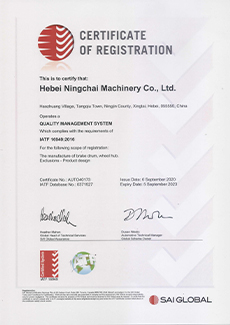
-
 Afrikaans
Afrikaans -
 Albanian
Albanian -
 Amharic
Amharic -
 Arabic
Arabic -
 Armenian
Armenian -
 Azerbaijani
Azerbaijani -
 Basque
Basque -
 Belarusian
Belarusian -
 Bengali
Bengali -
 Bosnian
Bosnian -
 Bulgarian
Bulgarian -
 Catalan
Catalan -
 Cebuano
Cebuano -
 Corsican
Corsican -
 Croatian
Croatian -
 Czech
Czech -
 Danish
Danish -
 Dutch
Dutch -
 અંગ્રેજી
અંગ્રેજી -
 Esperanto
Esperanto -
 Estonian
Estonian -
 Finnish
Finnish -
 French
French -
 Frisian
Frisian -
 Galician
Galician -
 Georgian
Georgian -
 German
German -
 Greek
Greek -
 Gujarati
Gujarati -
 Haitian Creole
Haitian Creole -
 hausa
hausa -
 hawaiian
hawaiian -
 Hebrew
Hebrew -
 Hindi
Hindi -
 Miao
Miao -
 Hungarian
Hungarian -
 Icelandic
Icelandic -
 igbo
igbo -
 Indonesian
Indonesian -
 irish
irish -
 Italian
Italian -
 Japanese
Japanese -
 Javanese
Javanese -
 Kannada
Kannada -
 kazakh
kazakh -
 Khmer
Khmer -
 Rwandese
Rwandese -
 Korean
Korean -
 Kurdish
Kurdish -
 Kyrgyz
Kyrgyz -
 Lao
Lao -
 Latin
Latin -
 Latvian
Latvian -
 Lithuanian
Lithuanian -
 Luxembourgish
Luxembourgish -
 Macedonian
Macedonian -
 Malgashi
Malgashi -
 Malay
Malay -
 Malayalam
Malayalam -
 Maltese
Maltese -
 Maori
Maori -
 Marathi
Marathi -
 Mongolian
Mongolian -
 Myanmar
Myanmar -
 Nepali
Nepali -
 Norwegian
Norwegian -
 Norwegian
Norwegian -
 Occitan
Occitan -
 Pashto
Pashto -
 Persian
Persian -
 Polish
Polish -
 Portuguese
Portuguese -
 Punjabi
Punjabi -
 Romanian
Romanian -
 Russian
Russian -
 Samoan
Samoan -
 Scottish Gaelic
Scottish Gaelic -
 Serbian
Serbian -
 Sesotho
Sesotho -
 Shona
Shona -
 Sindhi
Sindhi -
 Sinhala
Sinhala -
 Slovak
Slovak -
 Slovenian
Slovenian -
 Somali
Somali -
 Spanish
Spanish -
 Sundanese
Sundanese -
 Swahili
Swahili -
 Swedish
Swedish -
 Tagalog
Tagalog -
 Tajik
Tajik -
 Tamil
Tamil -
 Tatar
Tatar -
 Telugu
Telugu -
 Thai
Thai -
 Turkish
Turkish -
 Turkmen
Turkmen -
 Ukrainian
Ukrainian -
 Urdu
Urdu -
 Uighur
Uighur -
 Uzbek
Uzbek -
 Vietnamese
Vietnamese -
 Welsh
Welsh -
 Bantu
Bantu -
 Yiddish
Yiddish -
 Yoruba
Yoruba -
 Zulu
Zulu
Understanding the Differences Between Disk and Drum Brake Systems in Vehicles
Disk and Drum Brakes A Comprehensive Overview
Braking systems are crucial components of any vehicle, ensuring safety and control during operation. Among the various types of braking systems, disk and drum brakes are the most commonly used in modern automobiles. Each system has its own unique characteristics, advantages, and disadvantages that influence their application in different vehicles.
Disk Brakes
Disk brakes consist of a caliper that houses brake pads and a rotor (or disk) that spins with the wheel. When the brake pedal is pressed, hydraulic fluid is sent to the caliper, pressing the brake pads against the rotor. This friction slows down the vehicle. Disk brakes are known for their efficient heat dissipation, which is a key factor in maintaining consistent performance under heavy braking conditions.
One of the primary advantages of disk brakes is their performance in wet conditions. The open design allows water and debris to be quickly expelled, reducing the risk of brake fade—a reduction in stopping power due to overheating. Disk brakes typically offer shorter stopping distances and greater responsiveness compared to their drum counterparts. They are often found in high-performance vehicles and on the front axles of most cars.
However, disk brakes can be more expensive to manufacture and replace than drum brakes. The complexity of the system and the higher quality materials used can drive up costs. Additionally, while disk brakes do provide excellent performance, they may wear out the pads more quickly than drum brakes, especially in applications involving heavy braking or high-performance driving.
Drum Brakes
disk and drum brakes

In contrast, drum brakes use a cylindrical design where brake shoes press against the inner surface of a drum to create friction. When the brake pedal is engaged, wheel cylinders push the shoes outward against the drum's inner surface, bringing the vehicle to a halt. Drum brakes are simpler in design and generally less expensive to produce, making them a popular choice for many economy and older vehicles.
One of the main advantages of drum brakes is their ability to generate more braking force in a smaller package. They are often used on the rear wheels of vehicles due to their effective braking under low-speed conditions. Drum brakes also tend to have a longer lifespan than disk brakes, which can make them more attractive for budget-conscious consumers.
However, drum brakes have their drawbacks. They can be prone to overheating, especially during prolonged braking, which can lead to brake fade. Their enclosed design can also trap moisture and debris, reducing their effectiveness in wet conditions. This can make drum brakes less reliable than disk brakes for modern driving needs, especially in regions with heavy rainfall or frequent stop-and-go traffic.
Conclusion
In summary, both disk and drum brakes have distinct advantages and disadvantages that influence their use in automotive design. Disk brakes offer superior performance, especially in wet conditions and under high stress, making them increasingly favored in modern vehicles. Conversely, drum brakes provide a cost-effective solution for basic vehicles, especially where maximum performance is not a primary concern.
Understanding the differences between these two braking systems helps consumers and automotive enthusiasts make informed decisions regarding vehicle performance, maintenance, and safety. As technology continues to evolve, we may find innovations that enhance both types of braking systems, but the fundamental characteristics of disk and drum brakes will likely remain integral to automotive design for years to come.
-
What Are Drum BrakesસમાચારJul.07,2025
-
Understanding Brake Drum MaterialસમાચારJul.07,2025
-
Semi-Trailer Brake Drum: A Key Component for Extreme Loads and Long-Distance TransportસમાચારJul.07,2025
-
Drum Brake Pads for SaleસમાચારJul.07,2025
-
Brake Drums for SaleસમાચારJul.07,2025
-
Brake Drum ManufacturerસમાચારJul.07,2025
-
Aluminum Brake Drums: The Future of High-Performance CarsસમાચારJul.07,2025
